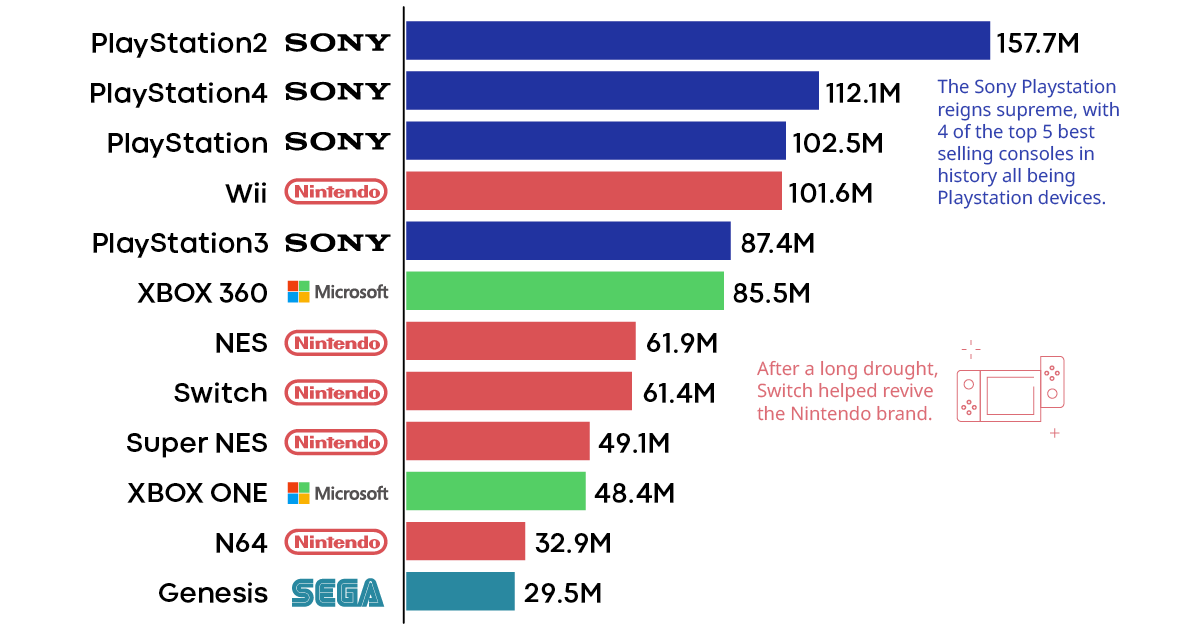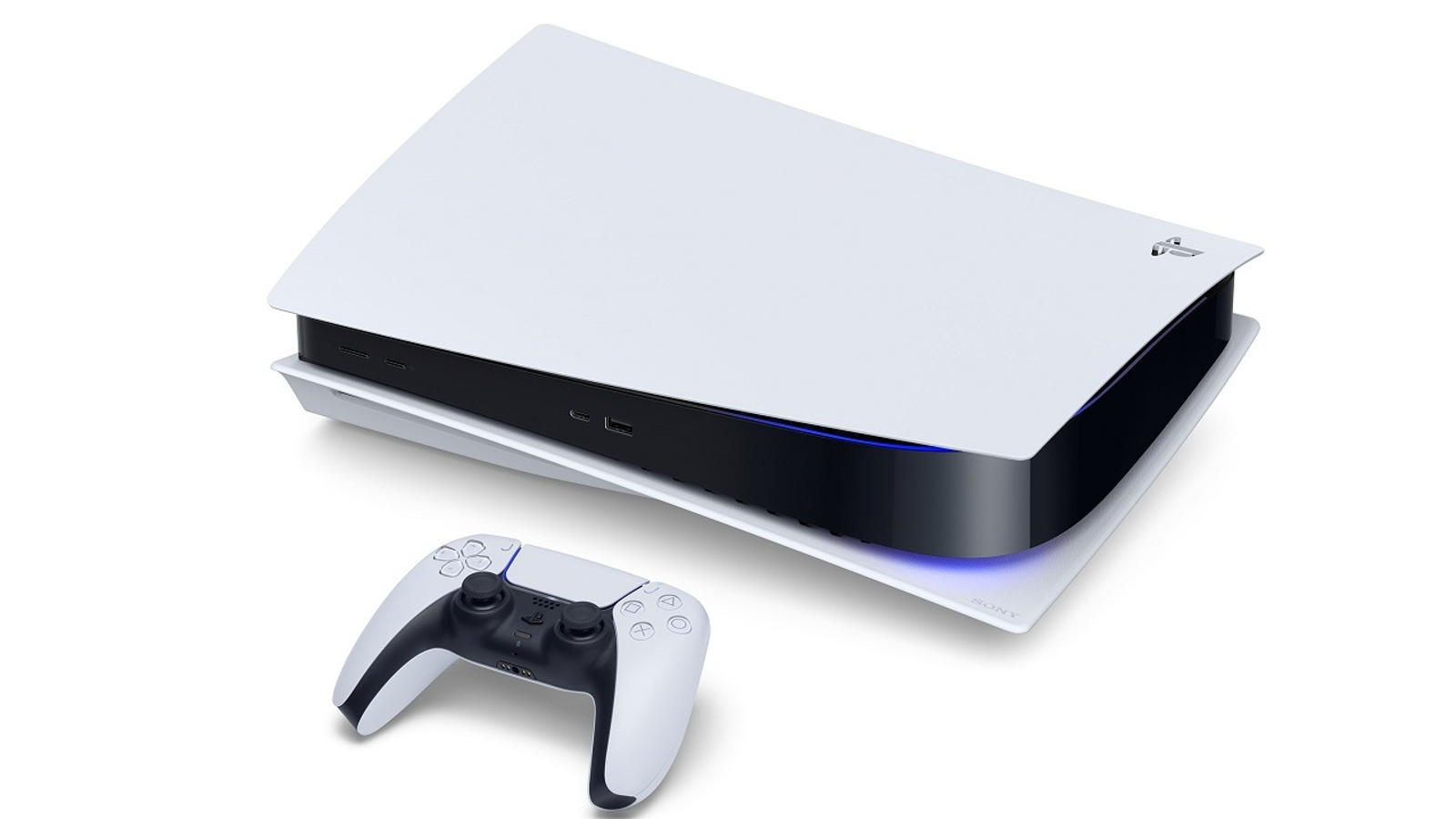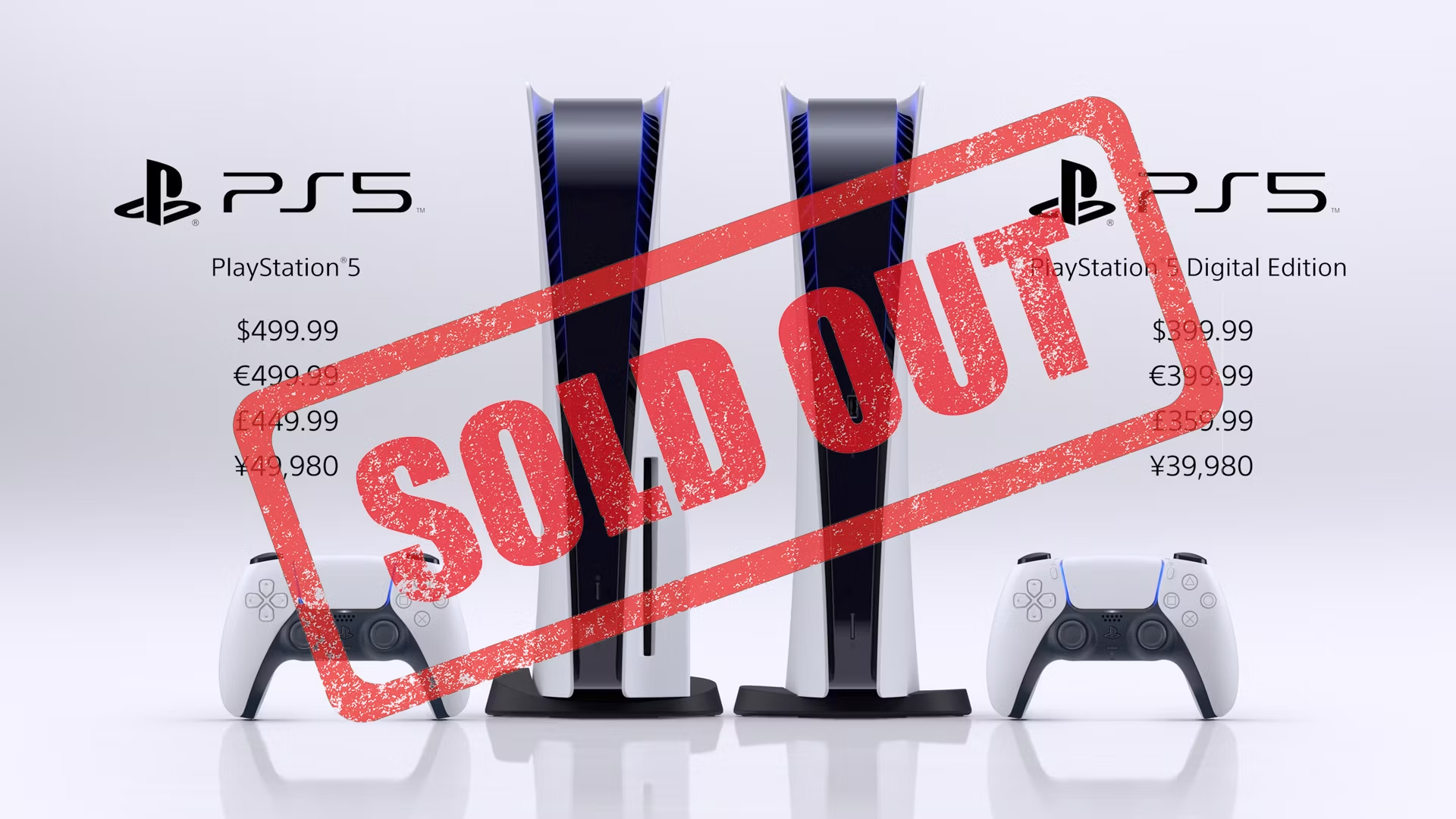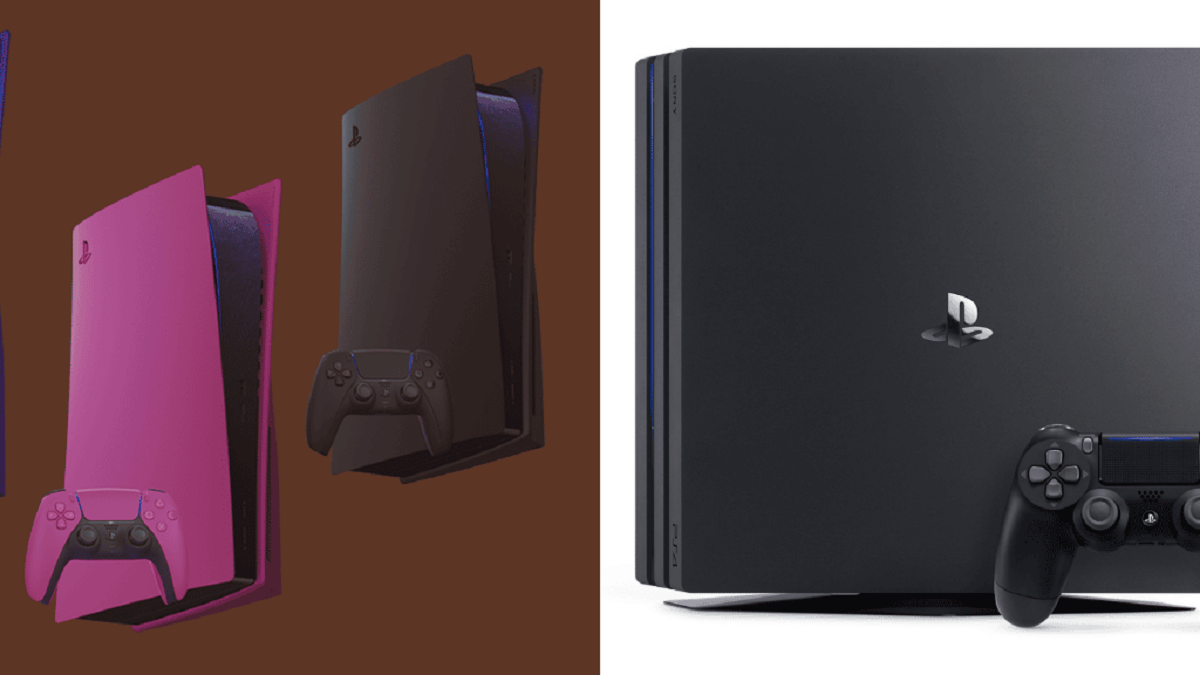Introduction
Welcome to the exciting world of gaming consoles! Over the years, gaming has evolved from simple arcade machines to cutting-edge consoles that offer immersive experiences. Gaming consoles have become an integral part of our lives, providing endless hours of entertainment and thrilling adventures.
The gaming industry has witnessed a remarkable transformation, with each new generation of consoles pushing the boundaries of technology and innovation. From the early days of Nintendo and Atari to the fierce rivalry between PlayStation and Xbox, gamers have been spoilt for choice.
This article will delve into the fascinating world of gaming console sales, exploring the most popular consoles and the factors that have contributed to their success. We will analyze the battle between PlayStation and Xbox, delve into the Nintendo legacy, and examine the rise of mobile gaming. So, grab your controller and get ready to explore the dynamic landscape of gaming consoles.
Gaming consoles have come a long way since their inception. They have evolved from bulky boxes with limited graphics and gameplay to sleek, high-definition powerhouses that deliver lifelike visuals and captivating stories. With each new console release, manufacturers aim to outdo their competitors by incorporating advanced features, innovative technologies, and exclusive game titles.
Not only do gaming consoles provide entertainment, but they have also become a social platform, allowing players to connect and compete with friends and players from around the world. Online multiplayer games have revolutionized the industry, creating a sense of community and camaraderie among gamers.
As the gaming industry continues to soar to new heights, the competition between console manufacturers intensifies. Companies strive to secure their place as the leader in the market, constantly pushing the boundaries of what is possible.
In the following sections, we will delve into the sales figures of gaming consoles and explore the battle between PlayStation and Xbox. We will then take a closer look at Nintendo’s contribution to the gaming world and examine the rising popularity of mobile gaming. Stay tuned as we uncover the factors that have shaped the gaming console landscape.
The Evolution of Gaming Consoles
The history of gaming consoles is a tale of constant innovation and technological advancements. It all began in the 1970s, when the iconic Atari 2600 revolutionized the gaming industry. This console allowed players to enjoy classic games like “Pac-Man” and “Space Invaders” from the comfort of their own homes.
Throughout the 1980s and 1990s, gaming consoles continued to evolve, with companies like Nintendo and Sega introducing their own iconic systems. The Nintendo Entertainment System (NES) brought beloved characters like Mario and Zelda into the spotlight, while the Sega Genesis offered fierce competition.
Then came the Sony PlayStation in the mid-1990s, which completely changed the game. With its CD-based format, the PlayStation became a massive success, introducing groundbreaking titles like “Final Fantasy VII” and “Metal Gear Solid”. The PlayStation’s success paved the way for further advancements in console technology.
The early 2000s saw the rise of the PlayStation 2 and the Xbox, which battled for dominance in the console market. The PlayStation 2 boasted an extensive library of games and became the best-selling console of all time, while the Xbox introduced online multiplayer capabilities and built a dedicated fan base.
The seventh generation of gaming consoles, which included the PlayStation 3, Xbox 360, and Nintendo Wii, brought about significant changes. The PlayStation 3 introduced high-definition gaming and Blu-ray technology, while the Xbox 360 revolutionized online gaming with Xbox Live. The Nintendo Wii, with its unique motion-controlled gameplay, appealed to a wider audience and brought a new level of interactivity to gaming.
With the eighth generation, the PlayStation 4 and Xbox One raised the bar even higher. These consoles boasted powerful hardware, enhanced graphics, and immersive experiences. They introduced new features like streaming services, virtual reality, and seamless integration with other entertainment devices.
Today, we are in the ninth generation of gaming consoles, with the release of the PlayStation 5 and Xbox Series X/S. These consoles continue to push the boundaries of performance and graphics, offering lightning-fast loading times, ray tracing technology, and adaptive triggers for a more immersive gameplay experience.
As we look back at the evolution of gaming consoles, it is evident that technology has played a pivotal role in shaping the gaming industry. Each new generation of consoles has brought forth innovative features and capabilities, captivating gamers around the world. From the humble beginnings of the Atari 2600 to the current state-of-the-art consoles, gaming has come a long way.
Gaming Console Sales Figures
The gaming console industry has experienced tremendous success over the years, with millions of units sold worldwide. Keeping tabs on the sales figures gives us a clear picture of which consoles have captured the hearts and minds of gamers.
When it comes to overall sales, the undisputed leader is the PlayStation 2 (PS2), which has sold over 155 million units since its release. The PS2’s extensive game library, affordable price, and longevity contributed to its incredible success. Following closely behind is the Nintendo DS, with over 154 million units sold. The DS’s innovative dual-screen design and touch controls made it a hit among casual and hardcore gamers alike.
Recent years have seen a fierce battle between the PlayStation 4 (PS4) and the Xbox One. As of 2021, Sony’s PS4 has taken the crown, surpassing 115 million units sold. The PS4’s powerful hardware, exclusive game titles, and robust online features were major contributing factors to its success. Microsoft’s Xbox One, though falling slightly behind, still boasts an impressive sales figure of over 50 million units.
In terms of handheld gaming consoles, the Game Boy and Game Boy Color hold the top spots, with a combined sales figure of over 118 million units. These portable devices introduced us to iconic franchises like Pokémon and Super Mario, solidifying their place in gaming history.
While PlayStation and Xbox dominate the console market, Nintendo has consistently stood out with its innovative offerings. The Nintendo Switch, released in 2017, has quickly become a fan-favorite, selling over 85 million units. The Switch’s unique hybrid design, allowing players to enjoy games both on the TV and in handheld mode, has appealed to a wide range of gamers.
It’s important to recognize that sales figures are not the sole indicator of a console’s success. Factors like game availability, pricing, marketing, and user experience contribute to a console’s appeal. However, these sales figures provide insight into the popularity and impact of each console on the gaming landscape.
As the gaming industry continues to evolve, we can expect to see new consoles emerging and sales figures shifting. With the release of the PlayStation 5 and Xbox Series X/S, the battle for dominance in the ninth generation is already underway. It will be fascinating to see how these consoles compete and what impact they will have on the industry.
Next, let’s explore the intense rivalry between the PlayStation and Xbox platforms and the key factors that have fueled their competition.
The Battle of the Titans: PlayStation vs. Xbox
The rivalry between PlayStation and Xbox has been one of the defining features of the gaming console industry for decades. These two giants have fiercely competed for dominance, each offering unique features and captivating game libraries.
Sony’s PlayStation brand burst onto the scene in 1994 with the original PlayStation, creating a new era of gaming. Since then, PlayStation consoles have consistently delivered cutting-edge graphics, immersive gameplay, and a wide range of exclusive titles. The PlayStation’s strength lies in its diverse game library, featuring critically acclaimed franchises like “God of War,” “Uncharted,” and “The Last of Us.”
Not to be outdone, Microsoft entered the console market in 2001 with the Xbox, adding a new player to the game. The Xbox introduced online multiplayer gaming through its Xbox Live service, revolutionizing how gamers connect and compete against each other. The Xbox brand has since grown to include multiple iterations, with the Xbox 360 and Xbox One cementing Microsoft’s position as a formidable competitor.
One of the primary factors that fuel this rivalry is the exclusive game titles offered by each platform. PlayStation has a strong lineup of exclusive franchises, such as “Gran Turismo,” “Horizon Zero Dawn,” and “Marvel’s Spider-Man.” These games have garnered critical acclaim and a dedicated fan base, driving sales for the PlayStation consoles.
On the other hand, Xbox boasts its own share of exclusive titles that have captured the hearts of gamers. The “Halo” series, in particular, has been a key factor in the success of the Xbox brand. With its gripping storyline and addictive multiplayer modes, “Halo” has become synonymous with the Xbox and a major selling point for the console.
Another factor that influences the PlayStation vs. Xbox battle is the hardware and technological advancements. Both Sony and Microsoft strive to offer powerful consoles, pushing the boundaries of graphics and performance. The PlayStation 5 and Xbox Series X/S are prime examples of this, delivering stunning visuals, faster load times, and enhanced gameplay experiences.
Online services also play a significant role in the competition. PlayStation Network and Xbox Live provide online multiplayer gaming, digital game stores, and exclusive benefits to subscribers. Each platform offers unique features and benefits, enticing gamers to choose one over the other.
Ultimately, the decision between PlayStation and Xbox is a matter of personal preference. Both consoles have their strengths and weaknesses, and it often comes down to the games, features, and online services that resonate with individual gamers.
The battle between PlayStation and Xbox continues to rage on, with each new console generation and exclusive title adding fuel to the fire. The competition drives innovation, ensuring that gamers are constantly treated to new experiences, cutting-edge technology, and unforgettable adventures.
In the next section, we will delve into the rich history and enduring legacy of Nintendo in the gaming console landscape.
The Nintendo Legacy
When it comes to gaming consoles, no discussion would be complete without mentioning the enduring legacy of Nintendo. With a rich history dating back to the 1980s, Nintendo has played a pivotal role in shaping the gaming industry and captivating generations of players.
It all began with the release of the Nintendo Entertainment System (NES) in 1985. The NES brought gaming into homes worldwide, introducing iconic characters like Mario and Zelda. These beloved franchises not only became synonymous with Nintendo but also revolutionized the platforming and adventure genres.
Nintendo’s innovation continued with the release of the Game Boy in 1989, which established the handheld gaming market. The Game Boy’s portability and impressive library of games, including the iconic Pokémon series, made it a must-have device for gamers on the go.
The success of the NES and Game Boy laid the foundation for future Nintendo consoles, including the Super Nintendo Entertainment System (SNES) and the Nintendo 64. The SNES offered enhanced graphics, immersive sound, and an impressive lineup of games that captivated players. The Nintendo 64 introduced 3D gaming and brought iconic titles like “Super Mario 64” and “The Legend of Zelda: Ocarina of Time” to life.
Nintendo’s innovation reached new heights with the release of the GameCube in 2001, which featured a compact design and introduced the world to memorable games like “Super Smash Bros. Melee” and “The Legend of Zelda: Wind Waker.” While it faced strong competition from the PlayStation 2 and Xbox, the GameCube remained a favorite among Nintendo fans.
Then came the Nintendo Wii in 2006, a console that defied expectations and revolutionized the gaming industry. The Wii’s motion-controlled gameplay made gaming accessible to a wider audience and introduced innovative titles like “Wii Sports” and “Super Mario Galaxy.” Its massive success proved that Nintendo’s innovation and willingness to take risks paid off.
In recent years, Nintendo has continued to make waves with the release of the Nintendo Switch in 2017. The hybrid console offers a unique gaming experience, allowing players to seamlessly transition between playing on their TV and enjoying games in handheld mode. The Switch’s versatility, combined with an impressive lineup of games like “Animal Crossing: New Horizons” and “The Legend of Zelda: Breath of the Wild,” has solidified its place as a fan-favorite.
What sets Nintendo apart is its commitment to creating innovative and family-friendly experiences. The company has prioritized gameplay, memorable characters, and unique mechanics that evoke a sense of nostalgia while appealing to new audiences. Nintendo continues to capture the hearts of players young and old with its charm, creativity, and dedication to delivering wholesome gaming experiences.
The Nintendo legacy extends far beyond the consoles themselves. From the classic NES to the groundbreaking Nintendo Switch, Nintendo has left an indelible mark on the gaming industry. Its consoles, games, and characters have become ingrained in popular culture, and its influence continues to inspire new generations of game developers and players alike.
Next, we will explore the ever-growing popularity of mobile gaming and its impact on the gaming console market.
The Rise of Mobile Gaming
In the past decade, the gaming landscape has undergone a significant transformation with the rise of mobile gaming. The exponential growth of smartphones and tablets has paved the way for a new era of gaming, one that has captivated a massive audience and redefined the gaming console market.
Mobile gaming offers convenience and accessibility like never before. With the majority of people owning smartphones, gaming is just a tap away. From casual puzzle games to immersive RPGs, mobile devices have become a gateway to a vast library of games.
The popularity of mobile gaming can be attributed to several factors. First and foremost, the portability of smartphones and tablets allows players to indulge in gaming whenever and wherever they desire. Whether during commutes, breaks, or relaxing at home, mobile gaming provides entertainment on the go.
Furthermore, mobile games often come with a low price point or even being free-to-play with in-app purchases. This accessibility allows a wide range of players to engage with games without significant financial investment, making mobile gaming attractive to a diverse audience.
Additionally, the sheer variety of games available on mobile platforms is staggering. From simple and addictive puzzle games like “Candy Crush Saga” to complex multiplayer experiences like “Fortnite,” there is something for every type of gamer. Mobile gaming has also seen the adaptation of popular franchises like “Pokémon GO” and “Minecraft,” further expanding its appeal.
Social interaction is another key aspect of mobile gaming. Many mobile games incorporate social features, allowing players to connect with friends, compete in multiplayer matches, and join online communities. This social element enhances the gaming experience and fosters a sense of community among players.
Mobile gaming has had a significant impact on the gaming console market. While dedicated gaming consoles still offer superior graphics and immersive experiences, many players have found solace in the convenience and versatility of mobile gaming. This has led to changes in consumer behavior, with some gamers opting for mobile games alongside or instead of traditional gaming consoles.
The success of mobile gaming has not gone unnoticed by console manufacturers. Both Sony and Microsoft have expanded their reach into the mobile space, offering companion apps, streaming services, and even mobile game releases. This integration between mobile and console gaming demonstrates the growing importance of mobile platforms in the gaming industry.
There is no denying the massive impact of mobile gaming. It has brought gaming to a wider audience, created new opportunities for game developers, and challenged traditional gaming consoles to adapt and innovate. As technology continues to evolve and mobile devices become more powerful, the influence of mobile gaming will only continue to grow.
In the next section, we will explore the various factors that affect console sales and the changing dynamics of the gaming console market.
Factors Affecting Console Sales
Several factors contribute to the sales of gaming consoles, shaping the dynamics of the market and determining which consoles emerge as frontrunners. Understanding these factors provides valuable insights into the ever-changing landscape of console sales.
Price is a significant factor that directly impacts console sales. While gamers are willing to invest in consoles that offer cutting-edge technology and immersive gaming experiences, affordability plays a crucial role. Console manufacturers must strike a delicate balance between offering high-quality hardware and an attractive price point to appeal to a wide range of consumers.
Game library and exclusives also heavily influence console sales. The availability of compelling and engaging game titles is a major motivator for consumers to purchase a particular console. Exclusive franchises, such as “Halo” for Xbox and “The Last of Us” for PlayStation, can serve as system-sellers and have a significant impact on console sales figures.
Technological features and specifications play a crucial role in attracting consumers. Gamers seek consoles that offer superior graphics, processing power, and performance. The ability to support high-resolution visuals, fast load times, and immersive gameplay experiences can greatly impact a console’s appeal and subsequent sales.
Brand loyalty is a strong driving force in console sales. Players who have had positive experiences with a particular brand are more likely to stick with that brand for future console purchases. This loyalty can be built through consistent delivery of quality games, supportive online services, and strong customer satisfaction.
Online functionality and multiplayer capabilities are increasingly important factors affecting console sales. The ability to connect with friends, engage in competitive matches, and access online content has become a standard expectation for gamers. Consoles that offer seamless online experiences and a robust multiplayer ecosystem are likely to attract more consumers.
Marketing and promotion efforts also significantly impact console sales. Engaging marketing campaigns, exclusive partnerships, and impactful announcements can generate hype and anticipation among gamers. Effective marketing strategies create awareness, spark interest, and drive sales for consoles.
Consumer preferences and trends play a vital role in shaping console sales as well. The gaming industry is constantly evolving, and staying in tune with the desires and preferences of consumers is essential. Factors such as the rise of indie games, the popularity of certain genres, and emerging gaming trends can greatly influence purchasing decisions.
Finally, external factors such as the state of the economy and competition from other entertainment mediums can impact console sales. During tough economic times, consumers may prioritize other expenses over gaming consoles. Additionally, competition from mobile gaming, PC gaming, and streaming services can divert consumer attention and affect console sales figures.
Considering these various factors provides crucial insights into the success and performance of gaming consoles in the market. Console manufacturers must consistently adapt to changing market dynamics, consumer preferences, and technological advancements to stay competitive and drive sales.
In the final section, we will summarize the key points discussed throughout the article and reflect on the ever-evolving nature of the gaming console industry.
Conclusion
The gaming console industry has come a long way since its humble beginnings, with each new generation of consoles pushing the boundaries of technology and innovation. From the fierce competition between PlayStation and Xbox to the enduring legacy of Nintendo, the gaming console landscape continues to captivate players worldwide.
Gaming console sales figures highlight the popularity and impact of each console on the market. From the record-breaking sales of the PlayStation 2 to the continued success of the PlayStation 4, Xbox, and Nintendo Switch, these consoles have left a lasting mark on the gaming landscape.
The battle between PlayStation and Xbox has been at the forefront for years, with each platform striving to offer unique features, compelling exclusives, and powerful hardware. The rivalry has driven innovation and shaped the gaming industry, providing gamers with unforgettable experiences.
Nintendo, with its rich history and iconic characters, has carved its own niche in the gaming console market. From the NES to the Nintendo Switch, the company’s dedication to innovation, family-friendly experiences, and timeless franchises has resonated with players of all ages.
Mobile gaming has emerged as a force to be reckoned with, with the convenience and accessibility of smartphones attracting a massive audience. While it may not rival the graphics and performance of dedicated gaming consoles, mobile gaming offers a wide variety of games and an on-the-go gaming experience.
Various factors influence console sales, including price, game library, technological features, brand loyalty, online functionality, marketing efforts, consumer preferences, and external influences. Console manufacturers must navigate these factors to stay competitive and meet the evolving demands of gamers.
The gaming console industry is constantly evolving, with new advancements and trends shaping its future. The release of the PlayStation 5 and Xbox Series X/S represents the beginning of the ninth generation, promising even more immersive experiences and cutting-edge technology.
As technology continues to advance, gaming consoles will continue to captivate players and provide immersive gaming experiences. Whether it’s the excitement of a new console release or the nostalgia of classic games, gaming consoles will remain a beloved form of entertainment for years to come.
So, whether you’re a loyal PlayStation fan, an avid Xbox supporter, or a Nintendo enthusiast, the world of gaming consoles offers a wealth of exciting adventures and endless possibilities.

























